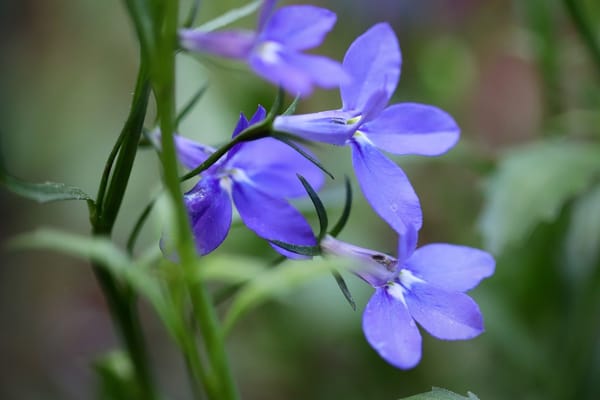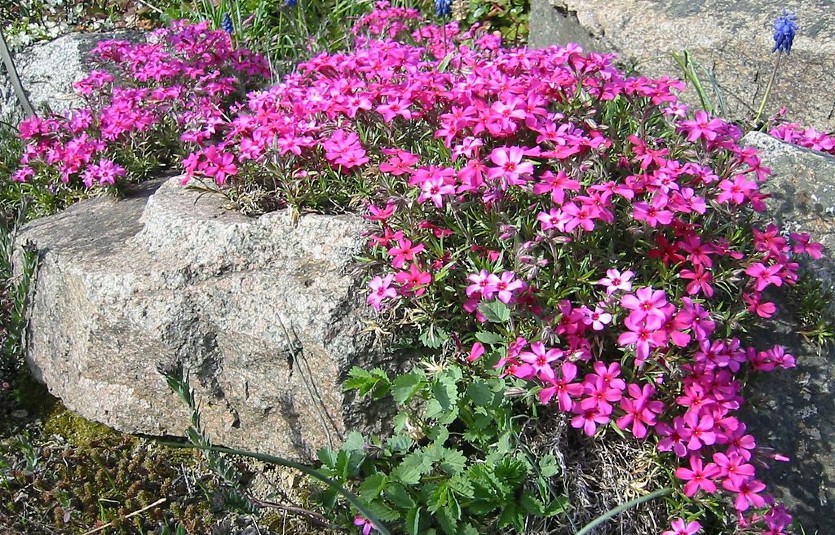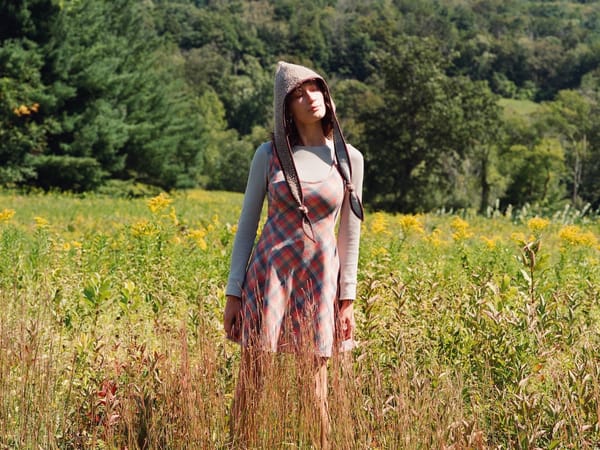Garden: Consider A Native Lawn
A horticulturist encourages us to nurture a native lawn, and what that means for the environment.

A horticulturist encourages us to nurture a native lawn, and what that means for the environment.

Lobelia, a "native lawn" wildflower favorite.
As April arrives, my neighbors start to bring back bags of fertilizer and herbicides from the garden center or big box store – they are beginning the annual treadmill of conventional lawn maintenance. I don’t follow suit; I long ago let my lawn devolve to an ad hoc collection of grasses and weeds, whatever chooses to grow in my yard that is mow-able, and which can survive without watering and feeding. Recently, though, horticulturist Kristine Boys of the Cornell Botanical Garden inspired me to consider raising my sights.
Krissy is Cornell Botanical Garden’s Natural Areas Horticulturist, and as such she manages the 10-acre Mundy Wildflower Garden. Not a fan of conventional lawns, which are designed to exclude wildflowers as well as other types of native plants, she began work on an alternative, a native lawn, in 2009. This was an inspired by a native grass, Danthonia spicata, commonly known as “poverty oat grass,” that she had come upon in rural walks around Cornell’s hometown of Ithaca. This grass is naturally low growing, forming mats of curly leaves that commonly reach a height of only a few inches. It also flourished on poor, dry-ish soils, suggesting that poverty oat grass would require far less care than our more familiar lawn species such as Kentucky bluegrass. To this grass, she decided to add a relative, Danthonia compressa, “mountain oatgrass” which grows a bit taller but still remains compact on dry, well-drained sites.

Antennaria plantaginifolia
Because she could find no commercial sources of Danthonia seeds back then (a number of wildflower nurseries do carry it now), Krissy collected her own, about half a pound, from the wild. The following spring, in mid-April, she scraped off the conventional turf from a low knob about 2,000 square feet in extent in the Mundy Wildflower Garden, amended the soil with sand to improve its drainage, and sowed the poverty oat grass seed. Hearkening back to an earlier model of lawn, the type of “flowery mead” you see in medieval illustrations and tapestries, Krissy also interspersed plugs of a number of wildflowers through the new lawn. This actually follows a tradition that persisted until relatively recently. In my explorations of old lawn manuals at the New York Botanical Garden library, I found that including wildflowers in a lawn was standard practice until the adoption of chemical broadleaf weed killers post World War II transformed our yards into grassy monocultures.
In Krissy’s “native lawn” the wildflowers consisted of low-growing species that she knew were adapted to similarly sunny, well-drained sites such as creeping phlox (Phlox subulata), pussy toes (Antennaria plantaginifolia), heartleaf foamflower (Tiarella cordifolia), wild geranium (Geranium maculatum), various short sedges (Carex spp.), blue-eyed grass (Sisyrynchium angustifolium), and (my favorite) bluets (Hedyotis caerulea). Other wildflowers and grasses such as blue lobelia (Lobelia siphilitica), and red cardinal flower (Lobelia cardinalis) seeded into a damper area, a shallow ditch that divided the knob from an encircling road.
The benefits of this sort of mixed planting are obvious, and Krissy’s native lawn has attracted a wide range of pollinators from native bees to butterflies. It is also a star in terms of sustainability. After its first season of growth, she has never had to water this lawn, nor does she fertilize or apply any pesticides. It typically requires only one or two mowings a year, with perhaps a third in exceptionally wet growing seasons. Given this, its carbon footprint is remarkably small. This enhanced level of sustainability also applies to the installation, for unlike conventional turf grasses, which require a fertile, usually heavily amended soil to take root, Krissy’s native lawn will flourish on most ordinary soils. Indeed, if she were to start it again, Krissy says, she would probably dig in some fine gravel to improve the soil’s drainage.

Phlox subulata
Coexisting with this sort of lawn requires a change in aesthetics. Although much richer biologically, the native lawn does not provide the button-down look of a conventional bluegrass lawn. And it requires far less inputs and work, which should make it appealing to busy gardeners and homeowners.
To learn more about native lawns, listen to my conversation with Krissy Boys on the Berkshire Botanical Garden “Growing Greener” podcast at thomaschristophergardens.com.
Be-a-Better-Gardener is a community service of Berkshire Botanical Garden, located in Stockbridge, Mass. Its mission, to provide knowledge of gardening and the environment through a diverse range of classes and programs, informs and inspires thousands of students and visitors each year. Thomas Christopher is a volunteer at Berkshire Botanical Garden and is the author or co-author of more than a dozen books, including "Nature into Art" and "The Gardens of Wave Hill" (Timber Press, 2019). He is the 2021 Garden Club of America's National Medalist for Literature, a distinction reserved to recognize those who have left a profound and lasting impact on issues that are most important to the GCA. Tom’s companion broadcast to this column, Growing Greener, streams on WESUFM.org, Pacifica Radio and NPR and is available at his website.








